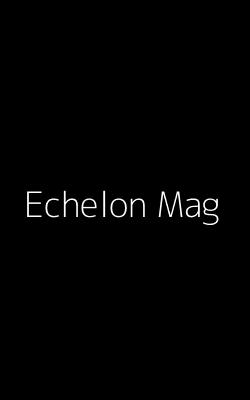When it was first brought to Sri Lanka, Sayerlack combined Italian heritage with regional expertise to gain a foothold in the wood coatings industry. Since then, the brand has become a cornerstone of the local wood coatings market, distributed exclusively by JAT Holdings PLC.
As the island’s market leader, Sayerlack both responds to and shapes consumer expectations. JAT Holdings PLC Chief Executive & Executive Director Nishal Ferdinando and Director Marketing Dilshan Rodrigo use the company’s trajectory to show how legacy brands can adapt and thrive through strategic localisation and a commitment to cleaner technology.
Sayerlack is known for its wood coatings, but how does the brand stay relevant in a market increasingly influenced by environmental regulations and material innovation?
Dilshan: Sayerlack celebrates its 70th anniversary this year as a global leader in innovative wood coating solutions. Our water-based coatings have helped us transform an industry that used to be dominated by solvent-based products with environmental drawbacks and poor durability in harsh climates, into one that now has eco-conscious solutions. Sayerlack’s constant innovation has helped us be the market leader in Sri Lanka for 25 years, with a similar position in Bangladesh, Maldives, and so on.
Since we brought our water-based coatings to Sri Lanka in 2000, our products’ combination of durability, product diversity, and environmental care made them popular amongst consumers.
The brand continues to drive innovation, for example, the development of UV coatings has significantly reduced application times and improved industrial efficiency. This not only streamlines operations but also lowers energy consumption, supporting more eco-conscious practices.
Nishal: The other side of it is that Sayerlack focuses only on wood coatings. Many other brands offer different ranges of products, such as emulsion and automotive paint. Meanwhile, Sayerlack has specialised in wood coatings, and that singular focus gives us the advantage.
What differentiates Sayerlack in an industry where product performance is often commoditised and price driven?
Nishal: Consumers recognise the strength and innovation of the brand, making price a secondary concern in many cases.
Even during the recession, some of the top decorative coating brands lost market share rapidly, but we managed to maintain our position. Despite difficult times, consumers understood the value of tested and proven quality, and that remains true to this day.
Dilshan:While Sayerlack may come at a premium, it’s an investment that pays off over time. Choosing a lower quality product that requires frequent reapplication can significantly increase your overall expense. Sayerlack’s superior durability means fewer touch-ups and less maintenance, reducing both labour and material costs over the product’s lifecycle. We are also the only wood coating in Sri Lanka with CATAS certification from Italy, a mark of proven durability and performance.
In short, you might pay more upfront, but you spend far less over time.
What internal R&D capabilities or partnerships are enabling the brand to move from functional product positioning to a more value-driven narrative around aesthetics, durability and sustainability?
Nishal: One of JAT’s most significant investments was our R&D facility where we invested Rs.400 million on state-of-the-art equipment. We also collaborate with entities like Cal Poly in California, the Polytechnic University of Catalonia in Spain, and the SherwinWilliams R&D departments to help localise our products, as they are originally manufactured in Italy.
Our local manufacturing capabilities have also expanded to include a binder manufacturing facility and an acrylic resin manufacturing plant. We were one of the first companies in South Asia to develop these raw materials required for the wood coatings, in line with European standards. Our robust relationship with Sherwin-Williams supports this process.
Ultimately, we have a great deal of infrastructure that ensures the brand maintains its aesthetic, performance, and sustainability goals.
What are the risks to brand equity as environmental standards tighten and customers demand traceability, lower VOCs, and sustainable sourcing?
Nishal: Sayerlack is not a South Asian brand. It is originally a European brand that’s now owned by an American company. This means we have to meet the requirements of multiple markets, such as where traceability, ethical practices, VOC levels, and so on are concerned. Certain regulations or standards take a while to be implemented in Sri Lanka, but we are always ahead of the curve due to the international standards we maintain.
Given this, we don’t believe that there is any risk to our brand equity in terms of environmental standards and compliance.
How does the brand engage with its ecosystem and work towards the long-term sustainability of the industry as a whole?
Dilshan: As the leading brand, we recognised the responsibility to elevate the profile of professional painters, both by upskilling the current workforce in line with evolving technologies and by inspiring the next generation to see painting as a respected, rewarding profession.
This led to the launch of the JAT Pintharu Abhiman programme, a two-pronged initiative focused on recognition and empowerment. We were the first company to partner with the National Apprentice and Industrial Training Authority (NAITA), streamlining the NVQ certification process for over 700 painters to date. In parallel, we rolled out a series of island-wide upskilling workshops. Collectively, through this programme and other training efforts, we now engage with over 3,000 painters each year.
Under the JAT Loyalty Programme, we partnered with Commercial Bank to ensure these painters were able to open bank accounts despite not having a fixed income. We were also the first in the industry to introduce an insurance scheme in partnership with Sri Lanka Insurance Corporation. This scheme now covers their families as well.
Today, 1 in 5 NVQ painters have their own business, with 60% increasing their income and another 80% seeing gains in their overall quality of life.
This is what we have accomplished so far, and we intend to keep building as time goes on.
Further information about the 100 Most Valuable Brands in Sri Lanka:
Sri Lanka’s Top 100 Most Valuable Brands
Introducing Brand Finance and Sri Lanka’s Most Valuable Brands
Brand Valuation Methodology: Identifying Sri Lanka’s Top 100 Brands


